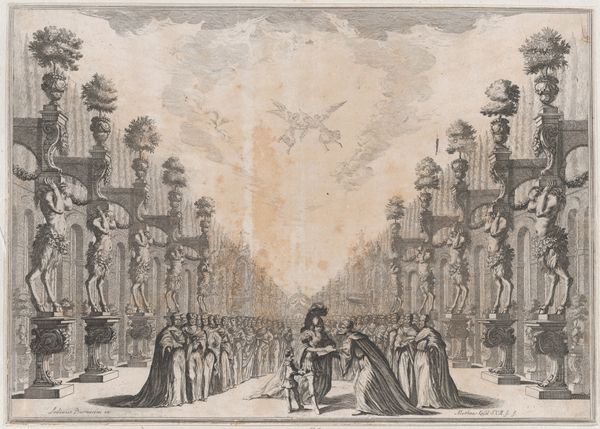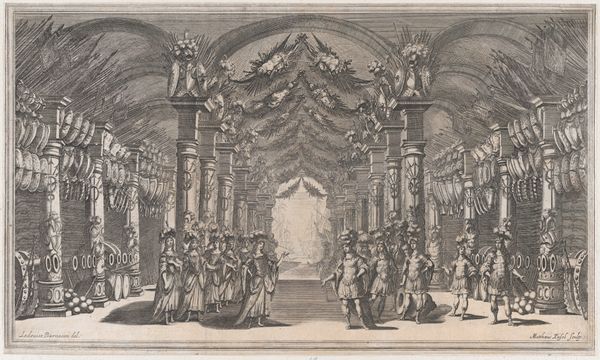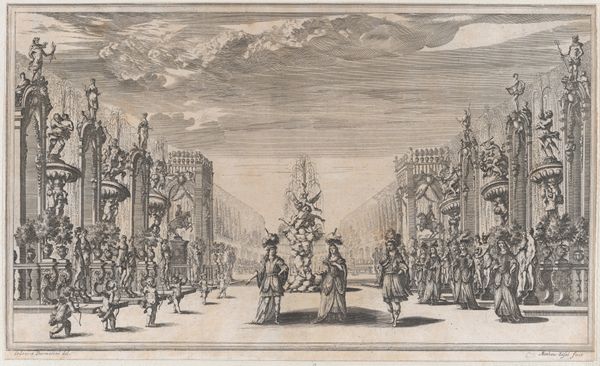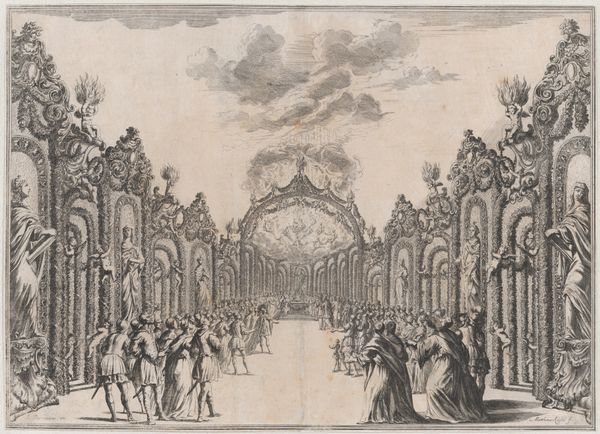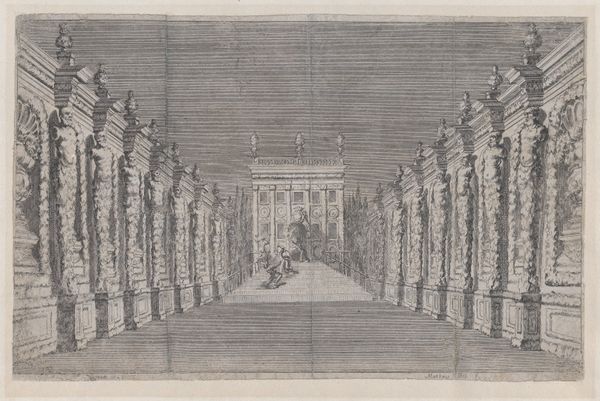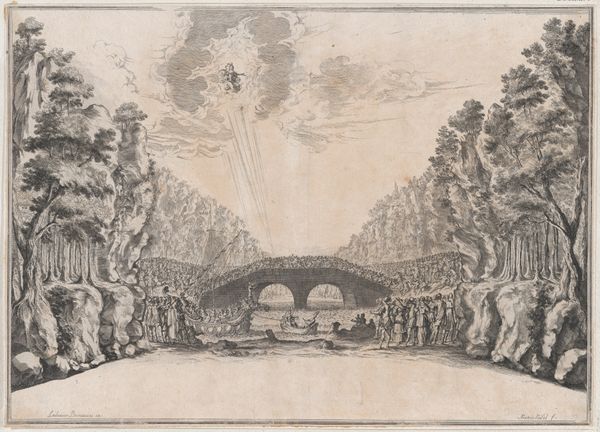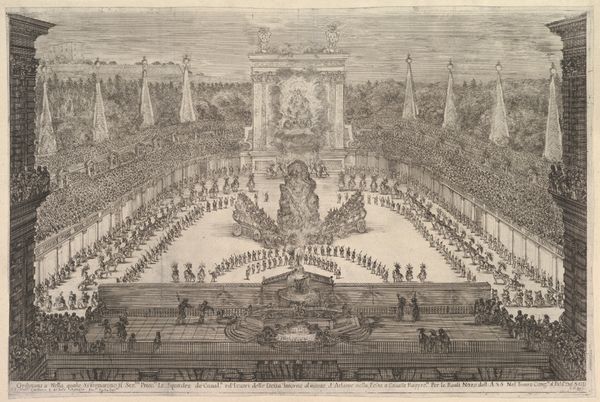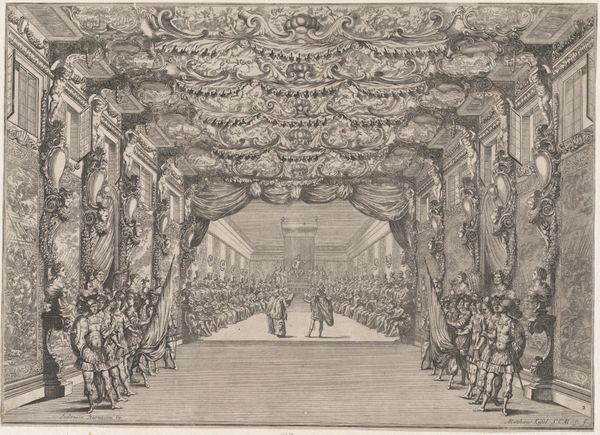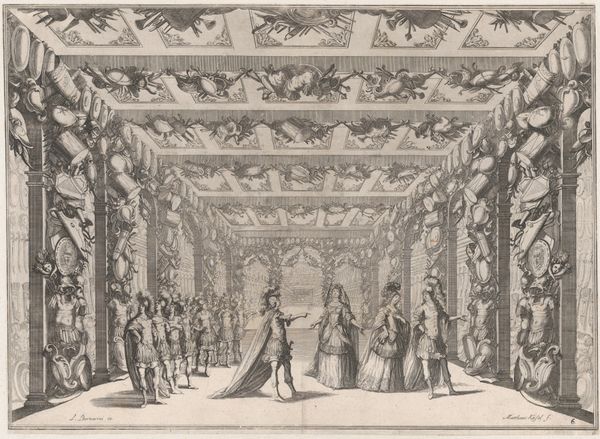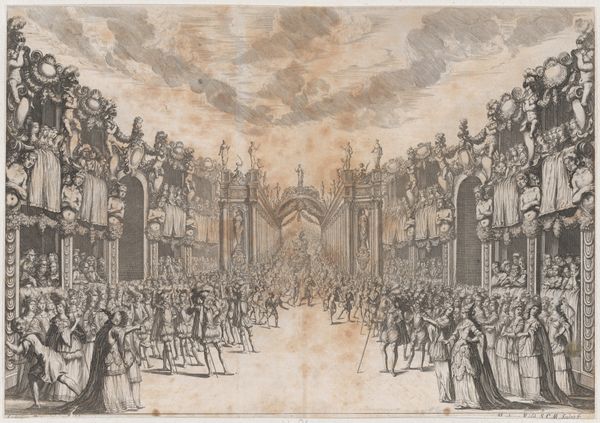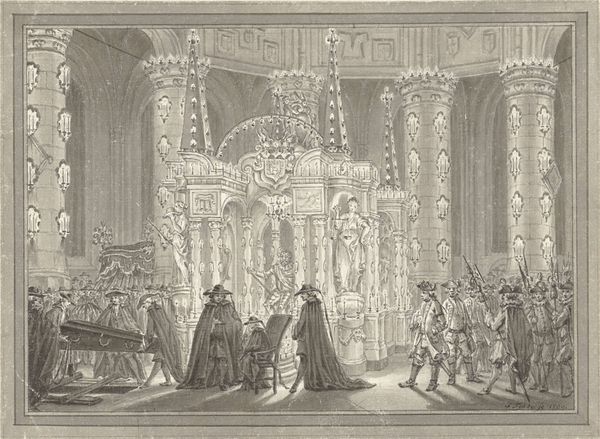
A large group gathered in a courtyard before a domed structure; musicians play at left; set design from 'Il Fuoco Eterno' 1674
0:00
0:00
drawing, print, engraving, architecture
#
drawing
#
baroque
# print
#
cityscape
#
history-painting
#
engraving
#
architecture
Dimensions: Sheet (Trimmed): 11 15/16 × 16 9/16 in. (30.3 × 42 cm)
Copyright: Public Domain
Curator: Just look at the stage! Our artwork today is a 1674 engraving by Matthäus Küsel titled "A large group gathered in a courtyard before a domed structure; musicians play at left; set design from 'Il Fuoco Eterno'," currently residing here at the Metropolitan Museum. It is rendered with astonishing intricacy! Editor: My initial reaction is one of orchestrated grandeur, though I find myself almost claustrophobic despite the courtyard setting. The intense detail, especially the columns with garland and statuary, creates a palpable tension. Curator: These columns speak to the Baroque era's interest in visual hyperbole, suggesting a space ripe for spectacle and ceremony, though the gathering crowds imply a stage set more than a sacred location. What symbols or historical connections do you make out from the design, in your view? Editor: Note how each individual within the crowd, each pleat of fabric, each floral accent, every cloud above has been carefully considered in its relation to all other things in this visual matrix. The architecture isn't just a backdrop, it is acting. In structuralist terms, one might say the artist has created an artificial world onto which narratives of status can be projected and endlessly played out, rather than simply reflecting social power. Curator: Exactly. Think of the cultural weight that stage setting must carry. It's presenting, almost literally, the drama of courtly life and even divine right, all taking place in front of this imposing architectural display. We are transported back in time. Editor: And by using engravings, Küsel invites multiple recreations and reenactments, not on stage but by replicating this very image itself! Curator: This makes engravings powerful carriers of cultural memory in their own right. I wonder, though, if our contemporary audience feels any of that history still resonating today, or has that drama become lost in the dust of ages? Editor: An intriguing question that leads me to look for more cues to dissect here. And what an exceptional engraving it is!
Comments
No comments
Be the first to comment and join the conversation on the ultimate creative platform.
